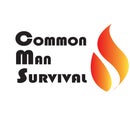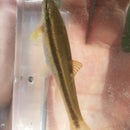Introduction: Comprehensive Survival Fire Kit
This is the lightweight, compact, and inexpensive fire kit I keep in my BOB. Remember that two is one and one is none in your kit so carrying multiple methods of creating fire and firestarters is essential.
Step 1: Container
I use a basic plastic container that has a locking lid with a rubber gasket. It's cheap, tough, and, most importantly, waterproof.
Step 2: Fire Methods
It's important to carry multiple methods of starting fire because each work better in different conditions. I carry 2 adjustable lighters, safety matches, a magnifying glass (wrapped in plastic wrap to prevent scratches), and a firesteel or ferrocerium rod. The lighters and matches are by far the easiest ways of starting fires but also the least reliable in windy or wet conditions. The magnifying glass does not use any resources to start fire but can only be used in sunny conditions. Last, the firesteel or ferrocerium rod is works in all conditions but requires dry and fine tinder.
Step 3: Firestarters/Tinders
To help start fires in the wilderness in poor conditions, I carry different types of firestarters and tinder. In my kit, I have about 1 meter of cotton cord that I dipped in wax. It easily lights with the flame of a lighter or match and if shredded, it can be lit with a firesteel. Similar to the wax cord is the wax firestarter and candle. These all serve as a flame extender to keep the flame of the match alive or conserving the fuel of the lighter.
For tinder, I carry cotton, char cloth, and wax paper that all easily take the spark of the firesteel or focused light from the magnifying glass. A pencil sharpener can be used to produce fine shavings from twigs and small branches.
Step 4: Conclusion
Your fire kit is ready to be put into your BOB or your hiking bag. You'll have peace of mind knowing that you can make fire in any condition.

Participated in the
Outdoor Survival Contest













